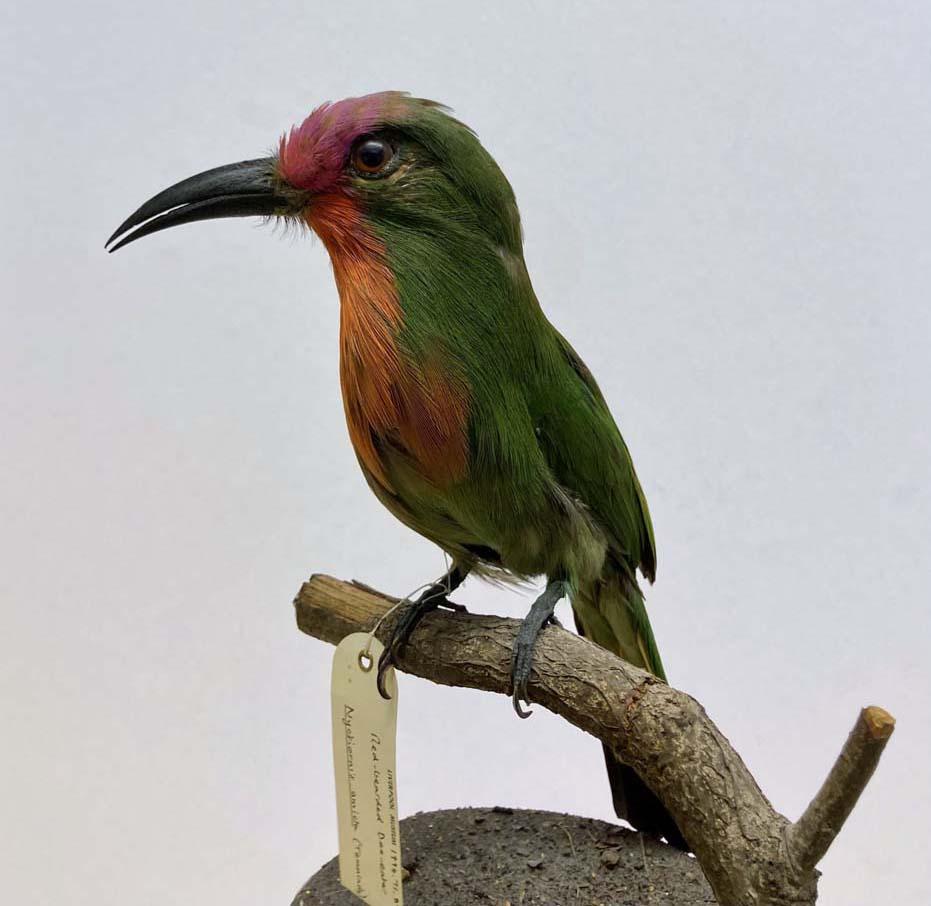Birds less likely to be found in the Big Garden Bird Watch
With so many birds in our collection, we wanted to share some more feathered friends from around the world.

The year 2023 marks the 44th year of The Big Garden Birdwatch. The UKs largest garden wildlife citizen science project, sees everyone from twitchers to toddlers, totter outside to track birds in their garden for an hour. If you're a keen twitcher, or you've taken part 44 times, you may be looking to stretch your wings when it comes to bird identification. This is where the World Museum can help. Having the second largest bird collection in England, a runner up to to the Natural History Museum on that front, why stop at your own garden? Here are some of our favourite birds, less likely to be found in the Big Garden Birdwatch.
Above we have a bee-eater, typically colourful birds, and this is a red-bearded bee-eater, Nyctyornis amictus. It has a red face which goes all the way down to the throat feathers to form the ‘beard’. You can find these birds in the dense forests of Sumatra, Borneo and southern Myanmar.

The yellow-legged green pigeon, Treron phonyceptaurus, is found in the Indian Subcontinent and parts of Southeast Asia. It feeds on fruit and is called Haroli or Hariyal in Marathi.

The splendid fairywren, Malurus splendens, can be found across much of the Australian continent. Females and young males tend to be a grey-brown colour which differs from the bright blue and black plumage of breeding males. Male wrens will pluck pink/ purple petals to present to females as part of a courtship display.

White-breasted kingfishers, Halcyon smyrnensis, can be found across Asia and feed on small reptiles, amphibians, rodents and crabs. Males and females look similar and juveniles have more dull colours than adults.

Oriental magpie-robins, Copsychus saularis, are commonly found in urban gardens and forests on the Indian subcontinent and Southeast Asia including Nepal, Sri Lanka, Thailand and Bangladesh. It is considered the national bird of Bangladesh and they were once popular as cagebirds because of their songs.
Although you won’t be able to find these birds in your local park or garden, you can check them out in the Treasure House Theatre Foyer in World Museum over the course of the Big Garden Bird Watch.
